Welcome to our first Bristol Bay Bulletin! My name is Elma, and after seven years of commercial fishing in Bristol Bay I’m living in Bellingham, Washington this summer and working a bit behind the scenes with Wild For Salmon. One of my biggest tasks of the summer will be to translate the happenings on the Ava Jane, Steve’s fishing vessel and home for the next six weeks, to you--our loyal and valued customer who has committed to buying wild Alaska salmon from Wild For Salmon, a telling sign that you care about where your food comes from. We’re here this summer to paint a bit of a clearer picture of the beautiful source that’s Bristol Bay and the salmon industry.

Elma with a king salmon on the Nushagak River, Summer 2012.
Early June in Bristol Bay is a unique time of year when the small towns of Dillingham and King Salmon are busiest; both sport and commercial fishermen are filling the airports, and year-round residents are gearing up to make room for this influx of people. A vibrant buzz fills the air as fishermen return to the boatyard, assessing how the harsh Alaska winter has treated their summer home, their baby, their boat. Much like the salmon, fishermen begin to flock upriver in preparation to disperse throughout the bay and catch some fish.

Steve and his crew arrived in Naknek, the bush town with a winter population of close to 500 people via King Salmon, last weekend. The past week, they have been busy settling into the rhythms of the bay and working on boat projects, giving the four-year old Ava Jane a little elbow grease and TLC to keep it like new. KDLG, the beloved and imperative community radio station out of Bristol Bay, ran a feature last week with some sneak peaks into boatyard life. Thankfully, the WFS crew’s boatyard time also includes some sport fishing trips and enjoying the wild sustenance of Bristol Bay.

Another important job of Steve’s during this time is to start monitoring the salmon. With the help of KDLG’s fish reports, the Alaska Department of Fish & Game announcements, and the impressive Port Moller Test Fishery, Steve, like all Bristol Bay captains, is building a mental map of salmon. 38 million fish are projected to return to the bay in just under three months; as fishermen leave the harbor into the vast, open bay, it helps to know where the fish have arrived, where they were seen, how big they are, how healthy they are, where they’re headed and coming from. In other words, pre-season is intense in its own ways, and Steve’s brain is full of details that will support him in catching enough salmon to feed all of you back on the East Coast.
There are essential resources in place to ensure that the season begins and ends sustainably; as mentioned before, fishermen in early June are waiting with baited breath for when the fish show, but they are also hanging on every word put out by the Alaska Department of Fish & Game and the area management biologist. In our region, this job falls on the shoulders of Travis Elison, whose voice will come over KDLG’s airwaves every three hours during the season, announcing when and where fishermen are allowed to lay their net out and for how long. His team is in place to make sure both that enough salmon complete their full life-cycle and continue all the way up-river to their spawning grounds so as to protect sustainable species returns (called escapement) and to foster the commercial harvest and its fishermen. The state of Alaska started strict and stringent enforcement of the Bristol Bay fishery as soon as it became a state, and although it is sometimes frustrating when the fishery is closed, we are forever grateful for their hard work in protecting this natural resource we love so much.
Steve and his crew will be poised and ready to launch the boat and go looking for fish as soon as the region fills with salmon and the masters at ADF&G trust that the amounts of fish arriving upriver and on our deck are in a healthy, sustainable balance. An open fishery doesn’t always mean fish in the nets so Steve will make the call to launch once he believes each set of the net is worth it rather than sit and wait on anchor and put unnecessary miles on the boat. Look for our update in two weeks time to hear about first days out on the water and first fish traditions!
For more on the Port Moller Test Fishery, check out last week’s KDLG update.



 Wild Alaska Salmon
Wild Alaska Salmon Alaska Salmon Burgers
Alaska Salmon Burgers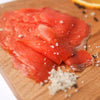 Smoked Salmon & Seafood
Smoked Salmon & Seafood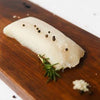 Wild Alaska Whitefish
Wild Alaska Whitefish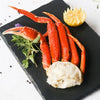 Wild Shellfish & Shrimp
Wild Shellfish & Shrimp Wild Albacore Tuna
Wild Albacore Tuna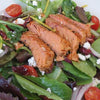 Canned Seafood
Canned Seafood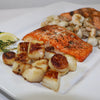 Meal Box & Samplers
Meal Box & Samplers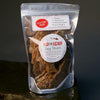 Pet Products
Pet Products Gifts
Gifts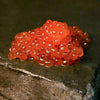 Specialty
Specialty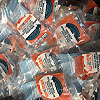 Wholesale Ordering
Wholesale Ordering